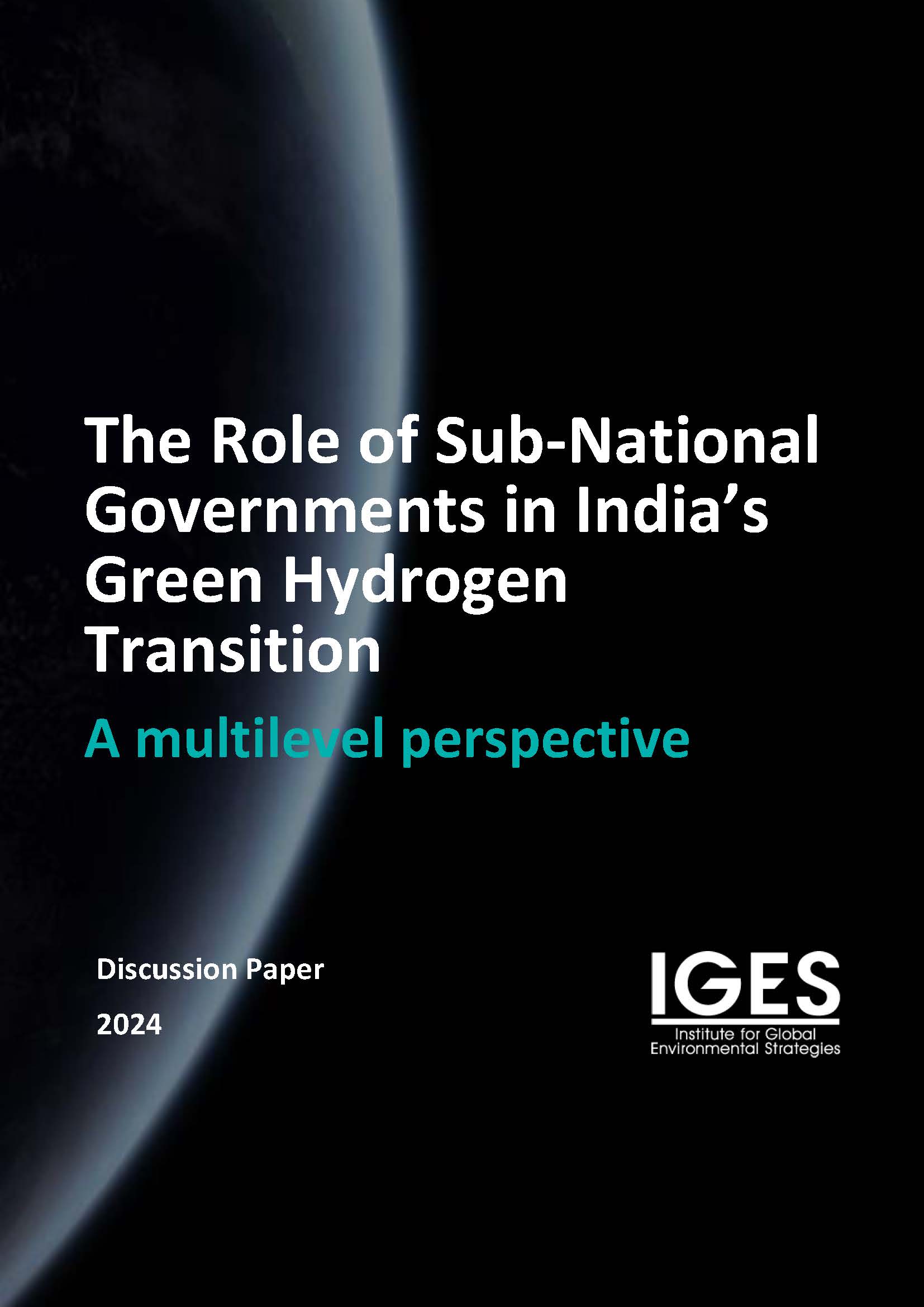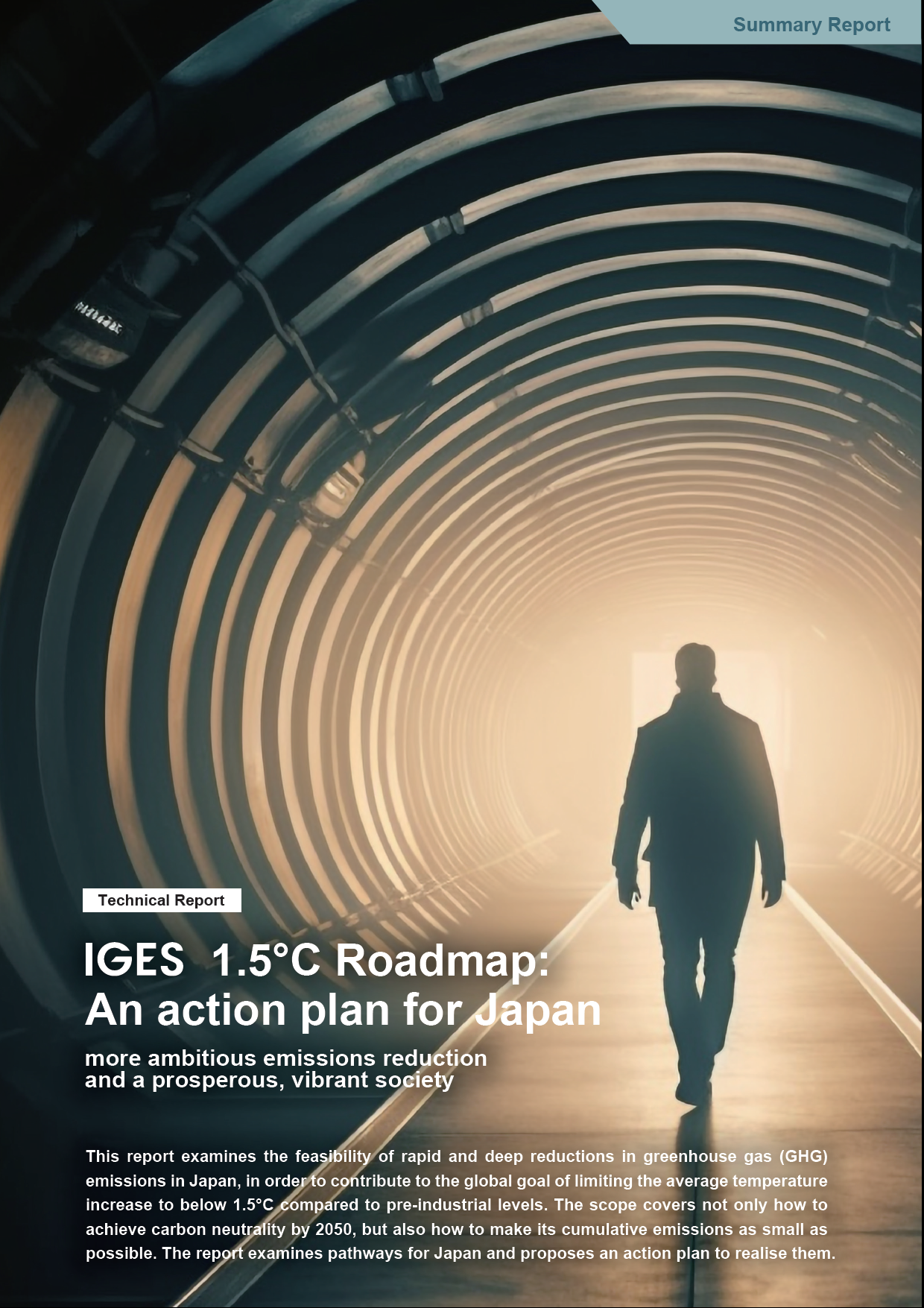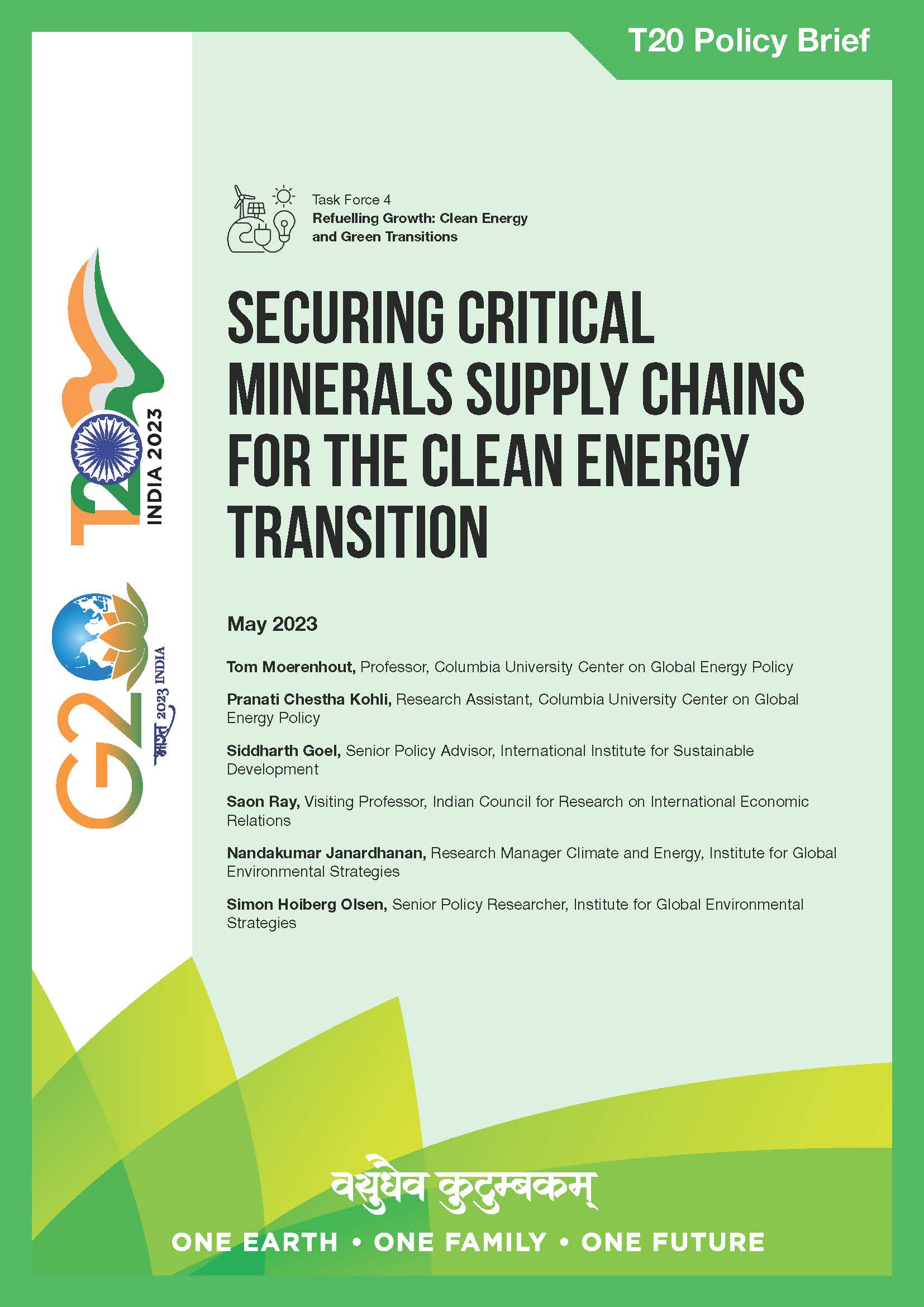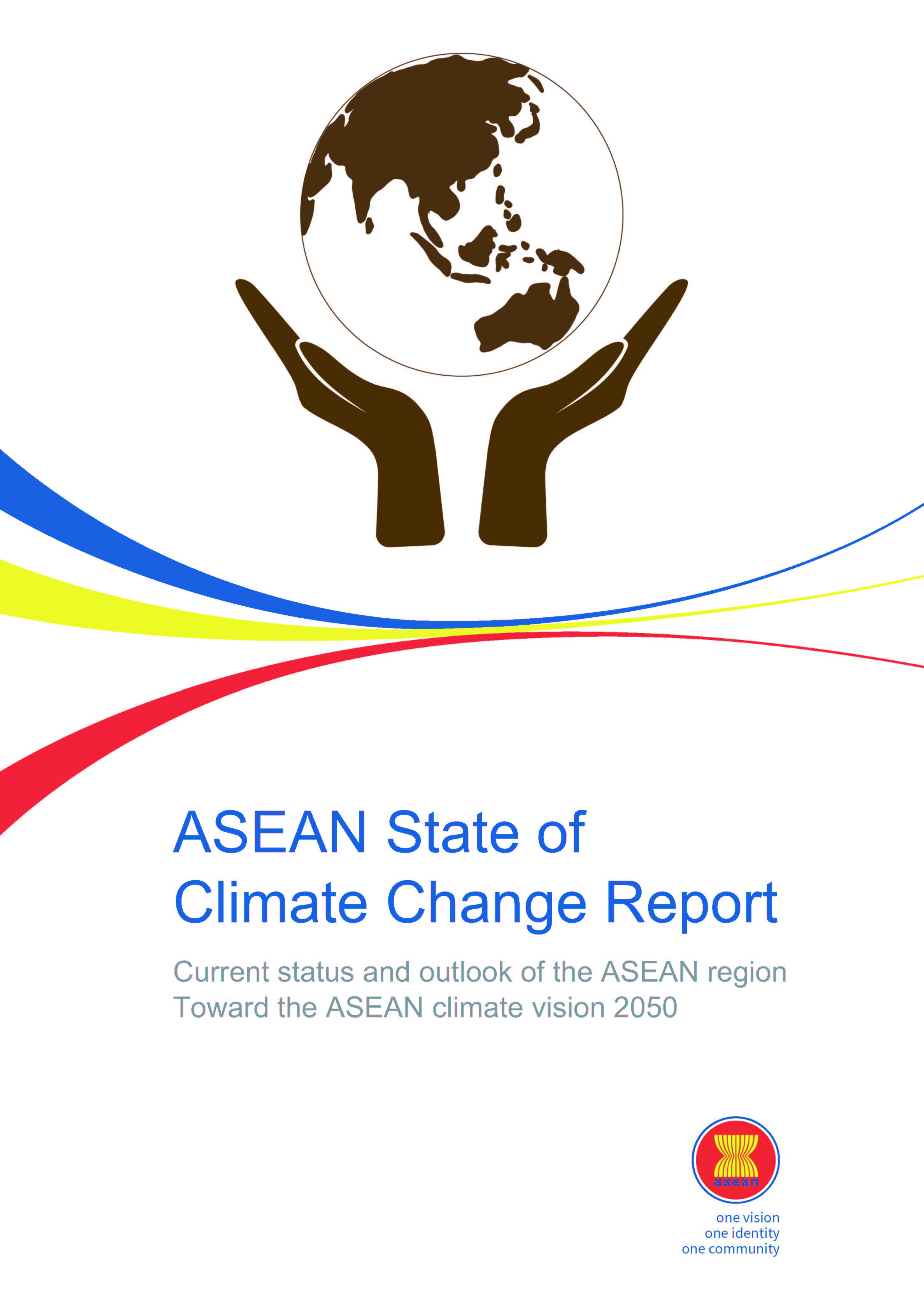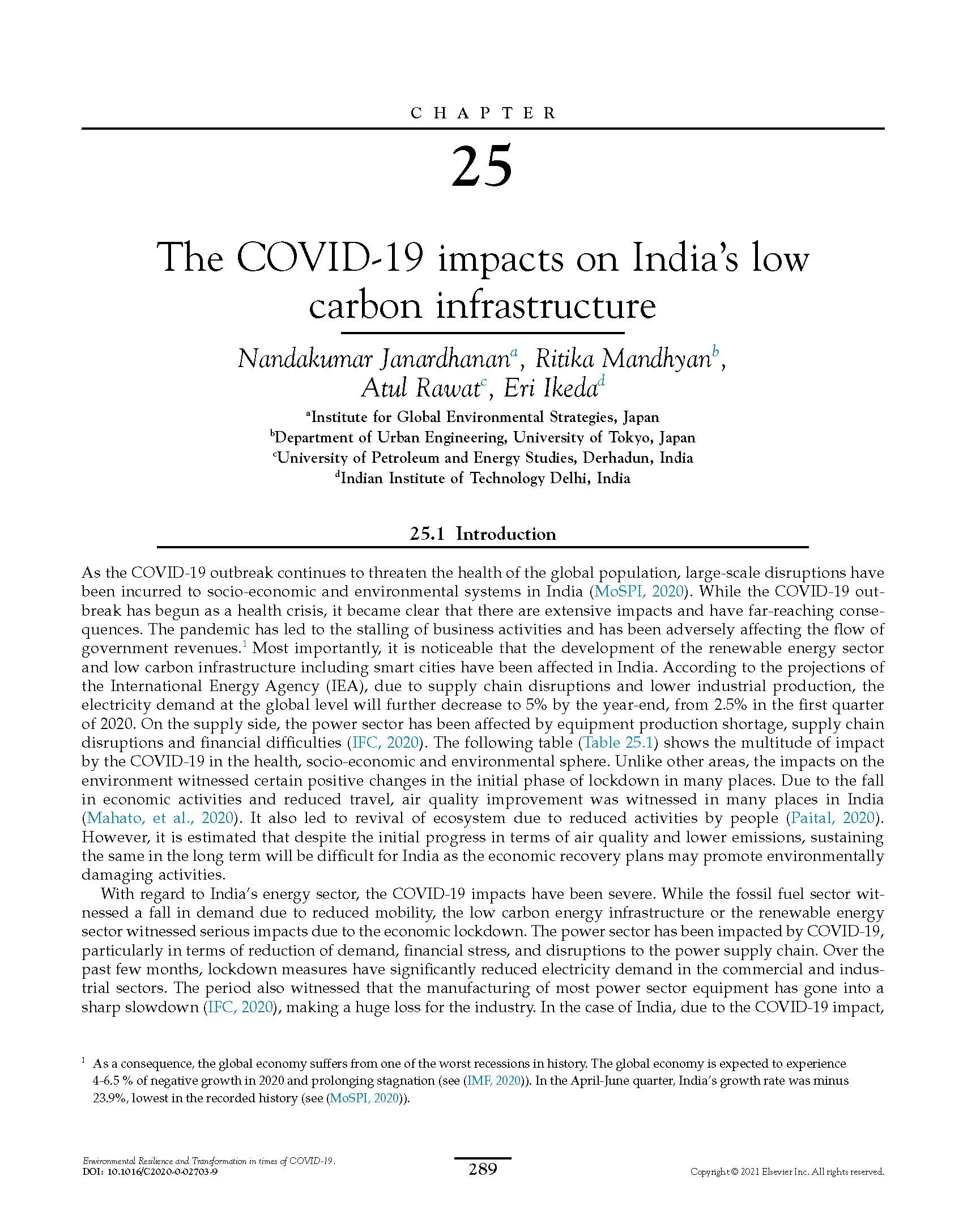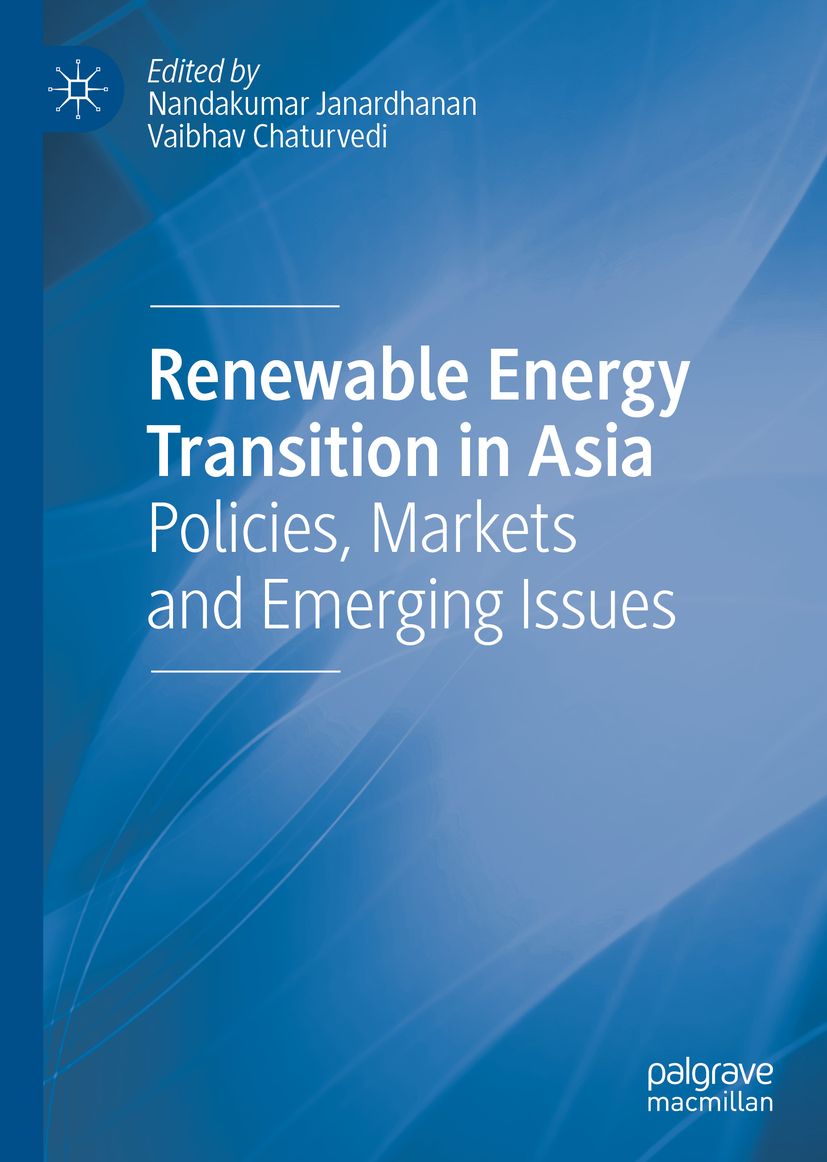India’s national government has offered strong support for the development of green hydrogen as part of the clean energy transition. However, much of the actual progress in this transition will depend on subnational governments. This paper argues India’s subnational governments have significant potential to capitalise on diverse natural resource...
- Clear all
- SDGs: (-) Goal 9. Industry, Innovation and Infrastructure
- Topic: (-) Energy Systems
- Topic: (-) Governance
Results 1 - 10 of 44 (Sorted by date)
本レポートは、世界平均気温の上昇を産業革命前と比べて1.5℃以内に抑えるという目標の達成に向けて、2050年までにカーボンニュートラルを実現するだけではなく、累積排出量をできる限り小さくする観点から、日本国内で早期に大幅な温室効果ガス(GHG)排出量削減を果たす可能性を検討し、その実現のためのアクションプランをまとめたものである。 2024年4月2日更新 謝辞の追記、出典の追記、誤記の修正を行いました。 企業の方向けに使いやすく再構成した「 1.5℃ロードマップ - 脱炭素でチャンスをつかむ。未来をつくる。 」もご活用ください。
This report examines the feasibility of Japan not only achieving carbon neutrality by 2050, but also making significant reductions in greenhouse gas (GHG) emissions, so as to make its cumulative emissions as small as possible, thereby contributing to the global goal of limiting the average temperature increase to below 1.5°C compared to the pre...
The International Energy Agency estimates that to hit net-zero globally by 2050, six times more critical minerals will be required in 2040 than today. The rapid increase in demand for critical minerals is likely to increase price volatility. This could aggravate energy security concerns, and thereby delay the necessary clean energy transition...
Keywords:
In China's Carbon-Energy Policy and Asia's Energy Transition: Carbon Leakage, Relocation and Halos
India has an ambitious renewable energy target for the decades ahead. However, the targets are faced with two critical impediments: (1) the lack of an internationally competitive renewable equipment manufacturing industry domestically and (2) the overdependency on external supply sources for equipment and machinery. The chapter finds that, despite...
The ASEAN State of Climate Change Report (ASCCR) provides an overall outlook of the state of play of climate change issues in the ASEAN region. ASCCR is also a forward-looking report, which includes recommendations on making the transition toward 2030 and on to 2050 for both adaptation and mitigation, considering ASEAN’s development context and the...
Japanese companies have pioneered the development of a large number of low-carbon technologies (LCTs). As a rapidly expanding economy with burgeoning energy requirements, India offers a significant potential market for Japanese LCTs. The industry sector in India accounts for a significant share of commercial energy use and hence carbon dioxide (CO2...
In Aligning Climate Change and Sustainable Development Policies in Asia
The widespread adoption of low emissions technologies in rapidly developing countries is critical to resolving the climate emergency.1 However, many fast growing economies lack the energy efficient, renewable, and other advanced technologies needed to mitigate climate change. Technology transfer could help address these countries need. Yet the...
Keywords:
In Environmental Resilience and Transformation in Times of COVID-19
The COVID-19 pandemic has posed unprecedented challenges to the global economy. India faces a multitude of challenges due to COVID-19 impacts. The pandemic-induced economic lockdown has posed barriers to various clean energy and low carbon infrastructure development projects. The renewable energy sector, which has been heavily dependent on global...
The Asian countries have diverse economic profiles, energy consumption patterns, greenhouse emissions, climatic conditions and socio-political landscapes. These dynamics bring into focus that drawing a uniform framework to define the energy transition process for the region is a difficult task. Keeping in view of this reality, this book identifies...
Keywords:

